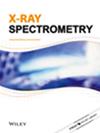Determination of macro‐ and microelements concentrations by wavelength‐dispersive X‐ray fluorescence spectrometry in the objects of the technogenic ecosystem
IF 1.5
4区 物理与天体物理
Q3 SPECTROSCOPY
引用次数: 0
Abstract
The wavelength‐dispersive X‐ray fluorescence (WDXRF) spectrometry was applied to determine Na, Mg, Al, P, S, K, Ca, Cr, Mn, Fe, Ni, Cu, Zn, Sr, Ba, and Pb concentrations in the needles of dwarfish spruce用波长色散 X 射线荧光光谱法测定技术生态系统物体中的宏量和微量元素浓度
采用波长色散 X 射线荧光 (WDXRF) 光谱法测定了矮云杉 Picea canadensis conica 和蓝刺云杉 Picea pungens glauca 的针叶中 Na、Mg、Al、P、S、K、Ca、Cr、Mn、Fe、Ni、Cu、Zn、Sr、Ba 和 Pb 的浓度,以及生长这些云杉的伊尔库茨克市技术土壤中的浓度。所有测量均在真空条件下使用德国布鲁克 AXS 公司生产的 S8 TIGER 型 WDXRF 光谱仪进行。对于土壤有证标准物质(CRMs),如 OOKO151(轻栗土壤),仪器检测限 (ILD) 的计算值从 0.5(镍)到 67 mg/kg(铝)不等;对于植物有证标准物质,如 LB-1(桦树叶)和 EC-1(加拿大水草),仪器检测限 (ILD) 的计算值从 0.2(铜和镍)到 18-24 mg/kg(钠)不等。重复性令人满意。土壤和可用植物材料的相对标准偏差 (RSD) 值不超过 15%。通过计算 T 统计量,发现 WDXRF 数据不包含系统误差。对于所研究的元素,WDXRF、全反射 X 射线荧光光谱法(TXRF)和电弧放电原子发射光谱法(d.c. arc-AES)结果的相对偏差值不超过 30%。
本文章由计算机程序翻译,如有差异,请以英文原文为准。
求助全文
约1分钟内获得全文
求助全文
来源期刊

X-Ray Spectrometry
物理-光谱学
CiteScore
3.10
自引率
8.30%
发文量
38
审稿时长
6-12 weeks
期刊介绍:
X-Ray Spectrometry is devoted to the rapid publication of papers dealing with the theory and application of x-ray spectrometry using electron, x-ray photon, proton, γ and γ-x sources.
Covering advances in techniques, methods and equipment, this established journal provides the ideal platform for the discussion of more sophisticated X-ray analytical methods.
Both wavelength and energy dispersion systems are covered together with a range of data handling methods, from the most simple to very sophisticated software programs. Papers dealing with the application of x-ray spectrometric methods for structural analysis are also featured as well as applications papers covering a wide range of areas such as environmental analysis and monitoring, art and archaelogical studies, mineralogy, forensics, geology, surface science and materials analysis, biomedical and pharmaceutical applications.
 求助内容:
求助内容: 应助结果提醒方式:
应助结果提醒方式:


